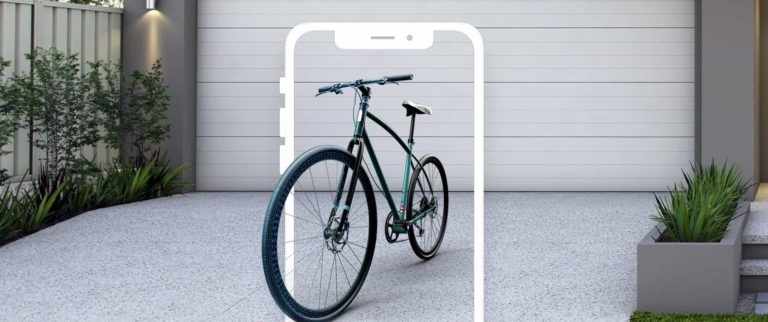
I
mmersive shopping is proving to have experiential impact for consumers, and revenue impact for brands. Related to – but separate from – AR advertising, this is when AR is used as a tool to visualize and contextualize products to engender more informed consumer purchases.
This is a subset of AR that we call camera commerce. It comes in a few flavors, including visualizing products on “spaces and faces.” It also includes visual search – pointing one’s smartphone camera at a given product to get informational, identifying, or transactional overlays.
In each case, AR brings additional context and confidence to product purchases. And this value has been elevated during a pandemic, as AR brings back some of the product dimension and tactile detail that’s been taken away from consumers during retail lockdowns.
Synthesizing these factors, ARtillery Intelligence recently produced a report to dive into the drivers and dynamics of camera commerce. How is the field shaping up? Who’s doing what? And how big is the market opportunity? We’ve excerpted the report below for AR Insider readers.
Cars to Couches
Remote AR visualization is the most well-known flavor of camera commerce today. This involves placing 3D objects on “faces & spaces” to visualize their qualities. These experiences have been distributed through social media apps as well as brand and retailer apps.
AR visualization has been most popular with items that go on one’s face. This piggybacks on comfort levels with selfies and front-facing camera lenses. It can help depict dimensions and stylistic factors of face-worn items such as sunglasses or cosmetics.
However, a larger opportunity awaits AR visualization that moves from the front-facing camera to the rear-facing camera. This opens up AR visualization to the broader canvas of the physical world, thus bringing in several other types of products – everything from cars to couches.
The consumer AR lens leader, Snapchat, is keen on this evolution and has begun to provide tools in Lens Studio to develop outward-facing world lenses. Elsewhere, we see traction for tools like the IKEA Place app, which lets IKEA shoppers visualize furniture in their homes.
In fact, this raises another attribute for successful AR visualization: bulky products. AR can solve a common pain point of figuring out if an item will fit in one’s space. AR visualization also shines in areas where there’s a great deal of product detail that 3D imagery can exhibit, such as wood grain.
Search What You See
The other main category of camera commerce is visual search. Led by Google Lens, Pinterest Lens and Snap Scan, this involves pointing one’s phone at an object to identify it through informational overlays. It’s also known in more plain-spoken terms as “search what you see.”
Visual search use cases today include general-interest subjects like pets and flowers. But like web search, Google’s evolutionary arc will involve cultivating usage and comfort levels before flipping the monetization switch. The latter will involve product-based visual searches.
In fact, commercial products are a natural fit for visual search, as there’s a high degree of “commercial intent,” inferred when consumers actively scan a given object. This high intent is the same factor that makes web search such a natural (and valuable) advertising medium.
In fact, visual orientation engenders even greater buying intent. Pinterest reports that 55 percent of its users say that visual search is instrumental in developing their style. 49 percent meanwhile use it to develop brand relationships, and 61 percent report that it elevates in-store shopping.
Speaking of Pinterest, it’s likewise positioning itself in visual search, as noted. In fact, the shopping use case that it has already conditioned makes its potential visual search monetization a natural extension. Other players that could emerge for the same reason include Instagram.
By the Numbers
After examining the two main forms of camera commerce, the next question is how big are they? As noted, product visualization is out of the gate first as a prevalent camera-commerce use case. But visual search could grow over time as its more-complex tech stack develops.
As a historical comparison, it’s notable that a similar progression defined online advertising’s early days. Display ads were prevalent long before search advertising was introduced. This could be analogous to the relative evolutionary paths of AR visualization and visual search.
Similarly, we believe that visual search – driven by high commercial intent – could eventually be a larger revenue opportunity than AR product visualization. However, this will take several years to develop. For example, Google is barely monetizing visual search today.
Specifically, ARtillery Intelligence projected in its mobile AR revenue forecast that visual search will grow from influencing $238 million in consumer spending last year to $6.4 billion in 2024. This makes it smaller than AR visualization by about five to one in 2024….but growing faster.
Meanwhile, AR product visualization will grow from $2.13 billion last year to $30.2 billion by 2024. These figures define the consumer spending that is influenced in some way through AR product visualization. This will continue to happen in a variety of channels and formats.
We’ll pause there and circle back in the next installation to go deeper on the drivers and dynamics of the above flavors of camera commerce…

